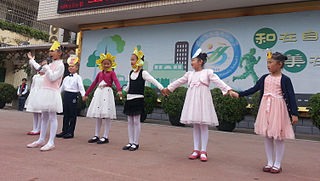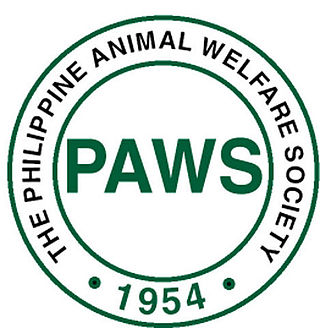
The Bright Promises Foundation is a nonprofit organization providing services to disadvantaged children in Illinois. Historically the organization was known as the Illinois Humane Society and supported animal welfare.

The Bright Promises Foundation is a nonprofit organization providing services to disadvantaged children in Illinois. Historically the organization was known as the Illinois Humane Society and supported animal welfare.
The organization was founded as the Illinois Society for the Prevention of Cruelty to Animals in 1869. [1] It was founded by Edwin Lee Brown and John Clark Dore with the help of George T. Angell, president of the Massachusetts Society for the Prevention of Cruelty to Animals. [2] The Society aimed to prevent cruelty to both children and animals, having legal jurisdiction throughout Illinois. In the 1870s, the Society investigated animal cruelty at the Union Stock Yards which resulted in arrests of individuals who did not feed or water livestock. [2] It added children to its mission in 1877, changing its name to the Illinois Humane Society. [1]
In 1893 friends of the organization, including Marshall Field, Philip Armour, and George Pullman, purchased a home in Chicago to serve as the Society's headquarters. This building was later demolished, but a fixture from the building was removed and rehung at the new Polk Street offices of the Society's Children Service Division. The Society's official magazine, the Humane Advocate began publication in 1906. [3] It was edited by Ruth Ewing. [4]
As one of the first agencies in the United States to deal with abused and neglected children, the organization advocated for legislation to address child protection in the workplace and society. [1] Its efforts to influence public opinion resulted in the creation of the Juvenile Court in Chicago in 1899 and the Chicago Commission on Youth Welfare in the 1950s. [1] It advocated for the registration of newborn infants, and crusaded against "distillery dairies" to ensure adequate supplies of wholesome milk. [1]
In the 1950s, the organization decided to focus on children exclusively. [1] Its name changed to the Bright Promises Foundation in 2009.
Historical records of the organization are archived at the University of Illinois at Chicago, and a collection of papers are at the Illinois State Historical Library in Springfield. [1]
There were few opportunities a century ago for travelers on the streets of Chicago to obtain fresh drinking water. In 1877, the Illinois Humane Society began erecting public drinking fountains. They commissioned a design "both pleasing and practical" by which water would flow at three levels, for people at the top, then horses, and finally dogs and small animals near the ground level. The cost was US$70 per fountain, plus $60 for a hookup to the city water pipes, including the services of a plumber and stonemason.
An undated fountain was outside the Mary McDowell Settlement House at 4630 S. McDowell Street, in the Back of the Yards neighborhood. Sixty-seven such fountains were maintained throughout the city at one time. One is still in use at the corner of Chicago Avenue and Michigan Avenue, opposite the Water Tower; a second is on display at the Museum of Science and Industry.
The organization's website stated in October 2014 that its current focus is on reducing the effects of childhood trauma. [5] "The Urban Youth Trauma Center (UYTC) at the University of Illinois at Chicago Institute for Juvenile Research addresses the needs of urban youth and families exposed to community violence by increasing access to trauma informed services." [5]
The American Society for the Prevention of Cruelty to Animals (ASPCA) is a non-profit organization dedicated to preventing animal cruelty. Based in New York City since its inception in 1866, the organization's mission is "to provide effective means for the prevention of cruelty to animals throughout the United States."

A humane society is a group that aims to stop cruelty to animals. In many countries, the term is used mostly for societies for the prevention of cruelty to animals (SPCA). In the United Kingdom, and historically in the United States, such societies provide waterway rescue, prevention and recovery services, or may give awards for saving human life.
A Society for the Prevention of Cruelty to Animals (SPCA) is a common name for non-profit animal welfare organizations around the world. The oldest SPCA organization is the Royal Society for the Prevention of Cruelty to Animals, which was founded in England in 1824. SPCA organizations operate independently of each other and campaign for animal welfare, assist in the prevention of cruelty to animals cases.
The Anti-Cruelty Society is an animal welfare organization and animal shelter in the River North neighborhood of Chicago, Illinois. The Anti-Cruelty Society is a private, not-for-profit humane society that does not receive government assistance. It is one of the largest such organizations in the United States. The organization offers adoption, veterinarian, and training services.
The Humane Society of the United States (HSUS) is an American nonprofit organization that focuses on animal welfare and opposes animal-related cruelties of national scope. It uses strategies that are beyond the abilities of local organizations. It works on issues including pets, wildlife, farm animals, horses and other equines, and animals used in research, testing and education. As of 2001, the group's major campaigns targeted factory farming, hunting, the fur trade, puppy mills, and wildlife abuse.

The New York Society for the Prevention of Cruelty to Children was founded in 1874. It is the world's first child protective agency. It is sometimes called the Gerry Society after one of its co-founders, Elbridge Thomas Gerry. It is commonly seen as having played a key role in the development of children's rights and child protective services in the English-speaking world. Today it offers support and advocacy for high-risk and abused children, parental skills classes, and professional training in the identification and reporting of child abuse and neglect.

Humane education is broadly defined as education that nurtures compassion and respect for living beings In addition to focusing on the humane treatment of non-human animals, humane education also increasingly contains content related to the environment, the compassionate treatment of other people, and the interconnectedness of issues pertaining to people and the planet. Humane education encourages cognitive, affective, and behavioral growth through personal development of critical thinking, problem solving, perspective-taking, and empathy as it relates to people, animals, the planet, and the intersections among them. Education taught through the lens of humane pedagogy supports more than knowledge acquisition, it allows learners to process personal values and choose prosocial behaviors aligned with those values.

John Joseph Kelso was a newspaper reporter and social crusader who immigrated to Canada from Ireland with his family in 1874 when he was ten years old. They suffered hardships of hunger and cold in their early years in Toronto and, throughout his life, this motivated Kelso's compassion towards the poor and unfortunate.

The Nova Scotia Society for the Prevention of Cruelty (Nova Scotia SPCA) is a not-for-profit charitable society organized under the Animal Protection Act of the Canadian province of Nova Scotia. The Society is dedicated to the prevention of cruelty to animals and to the promotion of respect and humane care for animals. Its members are committed to providing humane leadership in animal advocacy, protection, education, and veterinary care.

The Philippine Animal Welfare Society (PAWS) is a volunteer-based, non-government organization whose goal is to prevent animal cruelty through education, animal sheltering and advocacy, based in Quezon City, Philippines. It was founded in 1954 by Muriel Jay. PAWS believes that the creation of a more peaceful society starts with the widening of mankind's circle of compassion which includes animals, thereby envisions a nation that respects animals, practices responsible pet ownership and protects wildlife. The volunteer-based organization rehabilitates these animals in the hope of finding them new homes and a second chance at a good life. PAWS does not take in pets of other people, but only victims of cruelty or neglect where the animal offenders are charged with violation of the Animal Welfare Act in court.

The Canadian Federation of Humane Societies (CFHS), branded as Humane Canada, is a non-profit animal welfare organization in Canada, representing humane societies, SPCAs, and animal rescue organizations. The organization's stated goal is to promote the welfare and humane treatment of animals and work to end animal cruelty.
Henry Bergh is a statue by American artist James H. Mahoney located at the Wisconsin Humane Society in Milwaukee, Wisconsin, United States. The bronze statue portrays Henry Bergh, the father of the humane movement in the United States, holding a cane in his proper right hand and petting a dog with a bandaged paw with his proper left hand. It was created in 1891 and stands 9 feet high.

Caroline White was an American philanthropist and anti-vivisection activist. She co-founded the Pennsylvania Society for the Prevention of Cruelty to Animals (PSPCA) in 1867, founded its women's branch (WPSPCA) in 1869, and founded the American Anti-Vivisection Society (AAVS) in 1883.
Cynthia Bathurst is an animal welfare advocate, winner of a national veterinary award, and founder and director of Safe Humane Chicago, a nonprofit which includes the first of its kind Court Case Dog Program.
Korea Animal Rights Advocates (KARA) is a non-profit organization that supports animal welfare in Korea and deals with animal cruelty cases. It is also responsible for the care of abandoned animals and their adoption.

Bands of Mercy were formal, locally led organizations in the 19th and 20th centuries that brought people—especially children and adolescents—together to learn about kindness to non-human animals. The Bands also worked to help animals and prevent cruelty in their area through humane education and direct action.
The British Columbia Society for the Prevention of Cruelty to Animals is a non-profit animal welfare organization which advocates for animal protection legislation, operates animal shelters, and runs educational workshops and public awareness programs throughout British Columbia, Canada. Founded in 1896, it is a registered charitable organization and one of the largest such animal welfare organizations in North America. As of 2017, BC SPCA had 36 branches, over 500 staff members, nearly 5500 volunteers, operated 5 veterinary hospitals/clinics and a wildlife rehabilitation centre, and sheltered more than 22000 animals. It is also one of the few animal welfare organizations to monitor animals in film.

People For Animals is one of India’s largest animal welfare organisations, originally founded by Maneka Gandhi in 1992. Currently, the headquarters of this organisation is located in New Delhi, with over 100 regional units located around India.

Public drinking fountains in Philadelphia, Pennsylvania, United States, have been built and used since the 19th century. Various reform-minded organizations in the city supported public drinking fountains as street furniture for different but overlapping reasons. One was the general promotion of public health, in an era of poor water and typhoid fever. Leaders of the temperance movement such as the Woman's Christian Temperance Union saw free, clean water as a crucial alternative to beer. Emerging animal welfare organizations, notably the Society for the Prevention of Cruelty to Animals, wanted to provide water to the dogs and working horses of the city on humanitarian grounds, which is why Philadelphia's drinking fountains of the era often include curb-level troughs that animals could reach.